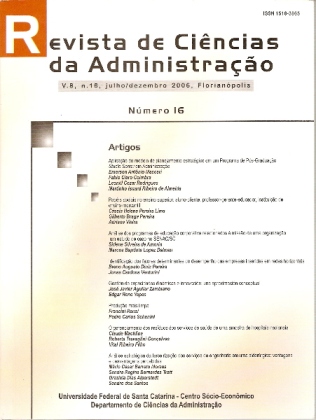O gerenciamento dos resíduos dos serviços de saúde de uma amostra de hospitais nacionais
DOI:
https://doi.org/10.5007/%25xResumo
O artigo refere-se aos Planos de Gestão de Resíduos de Serviços de Saúde – PGRSS – de uma amostra de 70 hospitais nacionais, sendo resultado de um curso de educação a distância, ministrado por um consórcio formado entre a Universidade Federal de Santa Catarina e a Fundação Getulio Vargas. Para cada Plano, foram processadas informações gerais sobre o hospital, relativas à infra-estrutura e aos procedimentos atualmente usados no plano de gestão de resíduos. Diagnosticou-se a situação desses hospitais no tocante ao manejo dos resíduos, classificados por tipo, desde a coleta até a disposição final. A água, os efluentes líquidos e as emissões gasosas também foram objeto de investigação. Foram avaliados ainda, sob os aspectos técnico e econômico. Os resultados da pesquisa indicam que os hospitais estudados se encontram em sua maioria numa fase incipiente em matéria de gestão dos seus resíduos, existindo considerável distância entre a gestão atual dos resíduos e as exigências legais que os hospitais devem cumprir nas áreas sanitária e ambiental.Downloads
Publicado
Como Citar
Edição
Seção
Licença
O autor deve garantir:
- que haja um consenso completo de todos os coautores em aprovar a versão final do documento e sua submissão para publicação.
- que seu trabalho é original, e se o trabalho e/ou palavras de outras pessoas foram utilizados, estas foram devidamente reconhecidas.
Plágio em todas as suas formas constituem um comportamento antiético de publicação e é inaceitável. RCA reserva-se o direito de usar software ou quaisquer outros métodos de detecção de plágio.
Todas as submissões recebidas para avaliação na revista RCA passam por identificação de plágio e autoplágio. Plágios identificados em manuscritos durante o processo de avaliação acarretarão no arquivamento da submissão. No caso de identificação de plágio em um manuscrito publicado na revista, o Editor Chefe conduzirá uma investigação preliminar e, caso necessário, fará a retratação.
Os autores cedem à RCA os direitos exclusivos de primeira publicação, com o trabalho simultaneamente licenciado sob a Licença Creative Commons (CC BY) 4.0 Internacional.

Os autores têm autorização para assumir contratos adicionais separadamente, para distribuição não exclusiva da versão do trabalho publicada neste periódico (ex.: publicar em repositório institucional, em site pessoal, publicar uma tradução, ou como capítulo de livro), com reconhecimento de autoria e publicação inicial neste periódico.
Esta licença permite que qualquer usuário tenha direito de:
Compartilhar – copiar, baixar, imprimir ou redistribuir o material em qualquer suporte ou formato.
Adaptar – remixar, transformar e criar a partir do material para qualquer fim, mesmo que comercial.
De acordo com os seguintes termos:
Atribuição – Você deve dar o crédito apropriado (citar e referenciar), prover um link para a licença e indicar se mudanças foram feitas. Você deve fazê-lo em qualquer circunstância razoável, mas de maneira alguma que sugira ao licenciante apoiar você ou o seu uso.
Sem restrições adicionais – Você não pode aplicar termos jurídicos ou medidas de caráter tecnológico que restrinjam legalmente outros de fazerem algo que a licença permita.


